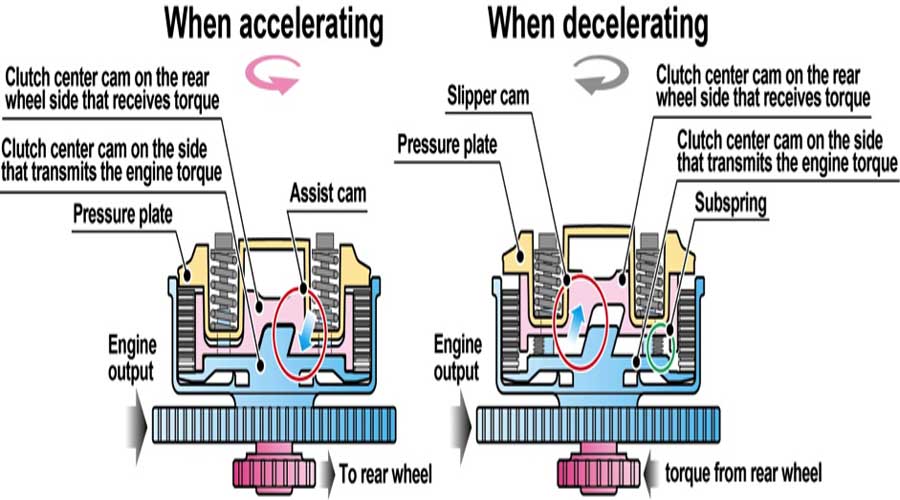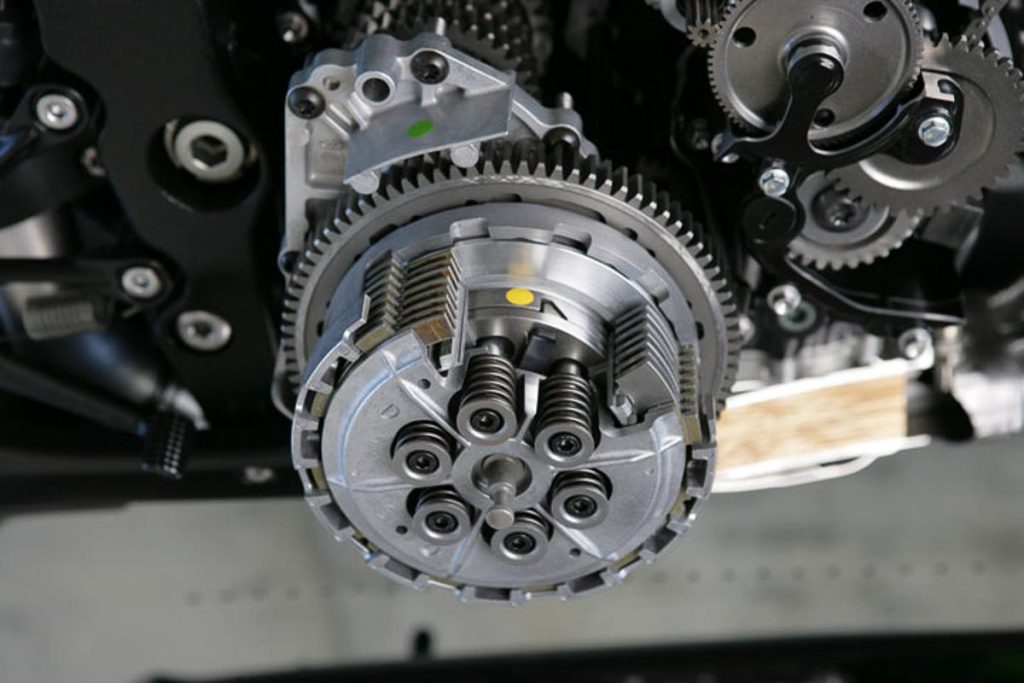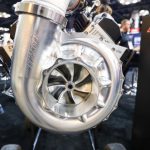The actual difference between the slipper clutch and normal clutch is the clutch hub. The base of clutch is on the right side and the hub of clutch is on the left side. You can see ball and ramp in the clutch base and ramp and engagement dogs in clutch hub (It may come with or without ball bearings, this one is without ball bearing). In normal operation, when the engine is trying to turn the rear wheel, the flat engagement dogs push on each other, and the clutch drives the motorcycle forward like a normal clutch operation.
During massive deceleration or hard breaking the torque forces the ramps together. To absorb engine braking force the ramps slide up on each other. This action lifts the hub up from the base, in the direction of pressure plate. It slides until the entire braking force is absorbed and then act like a normal clutch. This mechanism is called “spring loaded ball sliding up ramp”. The above process absorbs the engine braking force and partially disengages the clutch from the engine.

When you are riding at high speeds and suddenly you encounter a sharp corner – the obvious reaction would be to slow down by applying the brakes and shifting in lower gear. But what if you have lesser time and you want to shift 2-3 gears at a time? And when you do this, you do it at the cost of damaging the gear box and putting your safety at risk which arises due to engine braking force. As a mechanism to reduce these issues, Slipper Clutch (also known as back torque limiter clutch) was introduced. Slipper Clutch helps by allowing the clutch to partially slip until the engine speed matches your own speed.
In normal clutches, the engine braking force is transmitted to rear wheel via chain drive (or shaft drive) which causes rear wheel to shake, jump or lose traction. This is the main concept behind slipper clutch – to control rear wheel under hard braking and downshifting that causes the rear wheel to lose traction. It is particularly helpful especially on higher displacement bikes where the engine braking force is massive and may cause the motorcycle to go out of control, resulting in a high-speed collision/accident!
Clutch Stake height:
Clutch stack height is more critical in a slipper clutch than in a normal clutch. The slipper clutch tends to work the best with a clutch stack height that is about 1 mm more than the distance between the clutch hub base and the pressure plate.
Clutch Plate:
Clutch plate order for slipper clutches may vary from the original method due to the clutch hub lifting off of the base. Some clutch plates include special friction plate and judder spring apart from steel plate and friction plate to engage the clutch smoother. In such conditions the first plate which is closest to the engine should be a friction plate. The second plate is a steel plate after, followed by special friction and judder spring.
Slipper Clutch Advantages
The following are the advantages of slipper clutch over normal clutch…
- Slipper clutch reduces sudden forces on the inside of the transmission and hence, reduces wear and tear on the transmission
- Correctly installed slipper clutch improves performance.
- It can prevent disastrous rear wheel lock up in case of engine seizure or transmission failure.
- It also reduces work of suspension by absorbing engine braking force hence less bumpy ride while cornering.
- The rider does not need to concentrate on clutch operation which allows him to concentrate on other things such as body posture, braking etc while cornering.
Slipper Clutch Disadvantages
Practically there are no disadvantages of slipper clutch but hypothetically there are a few, such as…
- It’s mechanically complex. Some slipper clutches are really complex to install and deal with (not many of them).
- They are expensive (not against the saving they make by reducing wear and tear of transmission, less suspension movement and increased rider safety).
- Sometimes you really need the engine braking force to slow down the bike (but how many times?) which can work against the concept and investment on slipper clutch.
- Slipper clutch can’t give desired results if not adjusted according to requirements.


